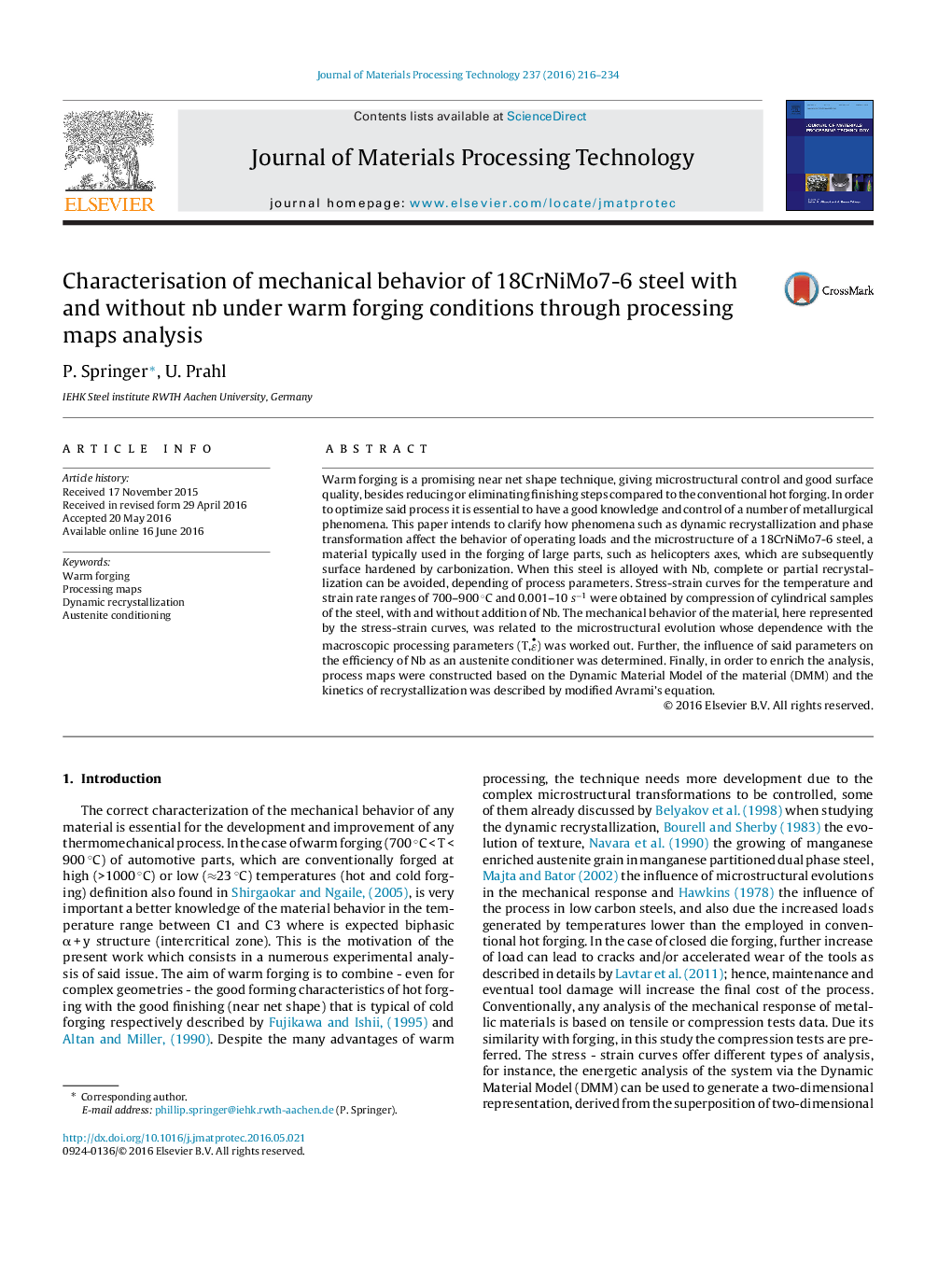| Article ID | Journal | Published Year | Pages | File Type |
|---|---|---|---|---|
| 795815 | Journal of Materials Processing Technology | 2016 | 19 Pages |
Warm forging is a promising near net shape technique, giving microstructural control and good surface quality, besides reducing or eliminating finishing steps compared to the conventional hot forging. In order to optimize said process it is essential to have a good knowledge and control of a number of metallurgical phenomena. This paper intends to clarify how phenomena such as dynamic recrystallization and phase transformation affect the behavior of operating loads and the microstructure of a 18CrNiMo7-6 steel, a material typically used in the forging of large parts, such as helicopters axes, which are subsequently surface hardened by carbonization. When this steel is alloyed with Nb, complete or partial recrystallization can be avoided, depending of process parameters. Stress-strain curves for the temperature and strain rate ranges of 700–900 °C and 0.001–10 s−1s−1 were obtained by compression of cylindrical samples of the steel, with and without addition of Nb. The mechanical behavior of the material, here represented by the stress-strain curves, was related to the microstructural evolution whose dependence with the macroscopic processing parameters (T,ε•) was worked out. Further, the influence of said parameters on the efficiency of Nb as an austenite conditioner was determined. Finally, in order to enrich the analysis, process maps were constructed based on the Dynamic Material Model of the material (DMM) and the kinetics of recrystallization was described by modified Avrami's equation.
